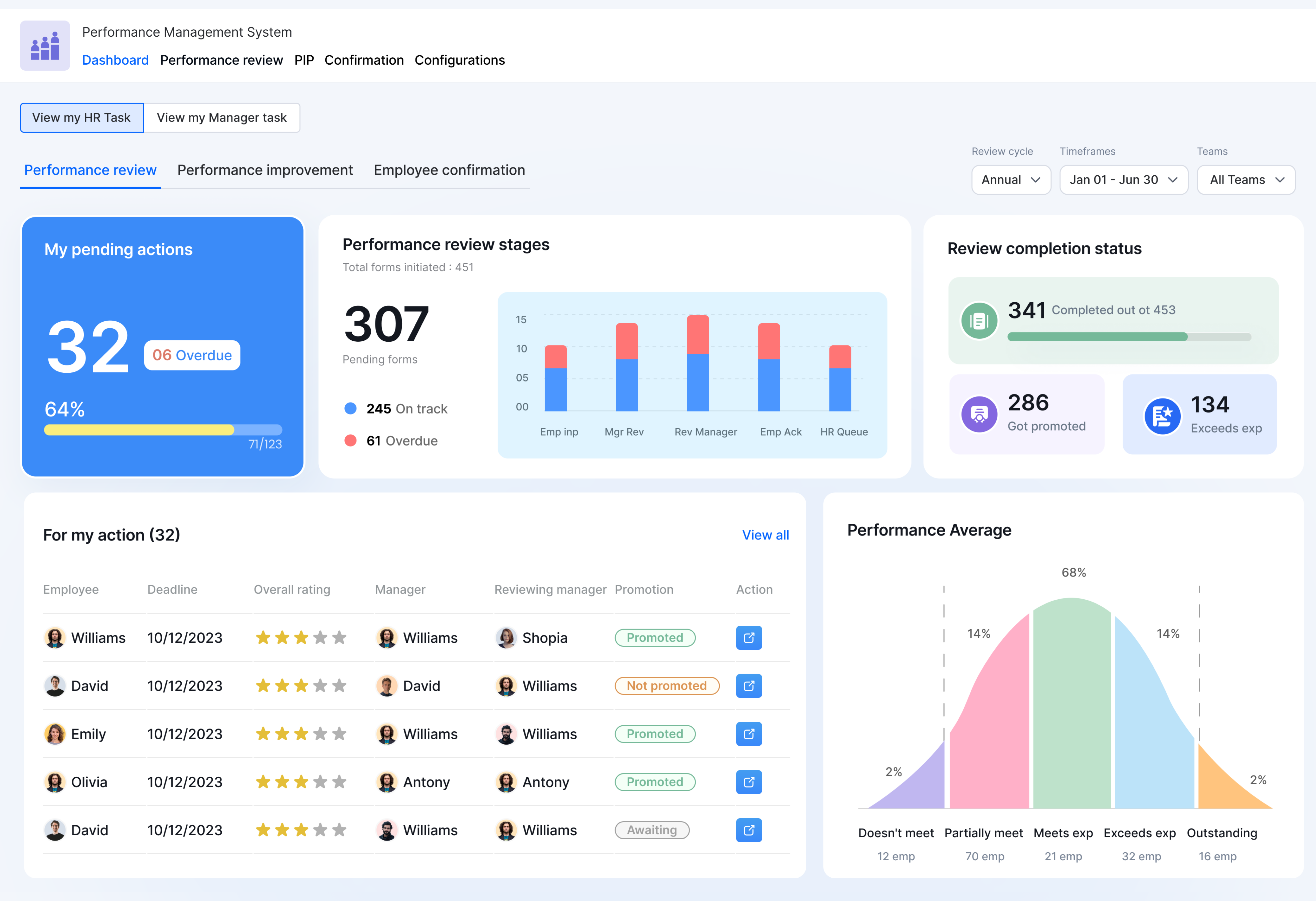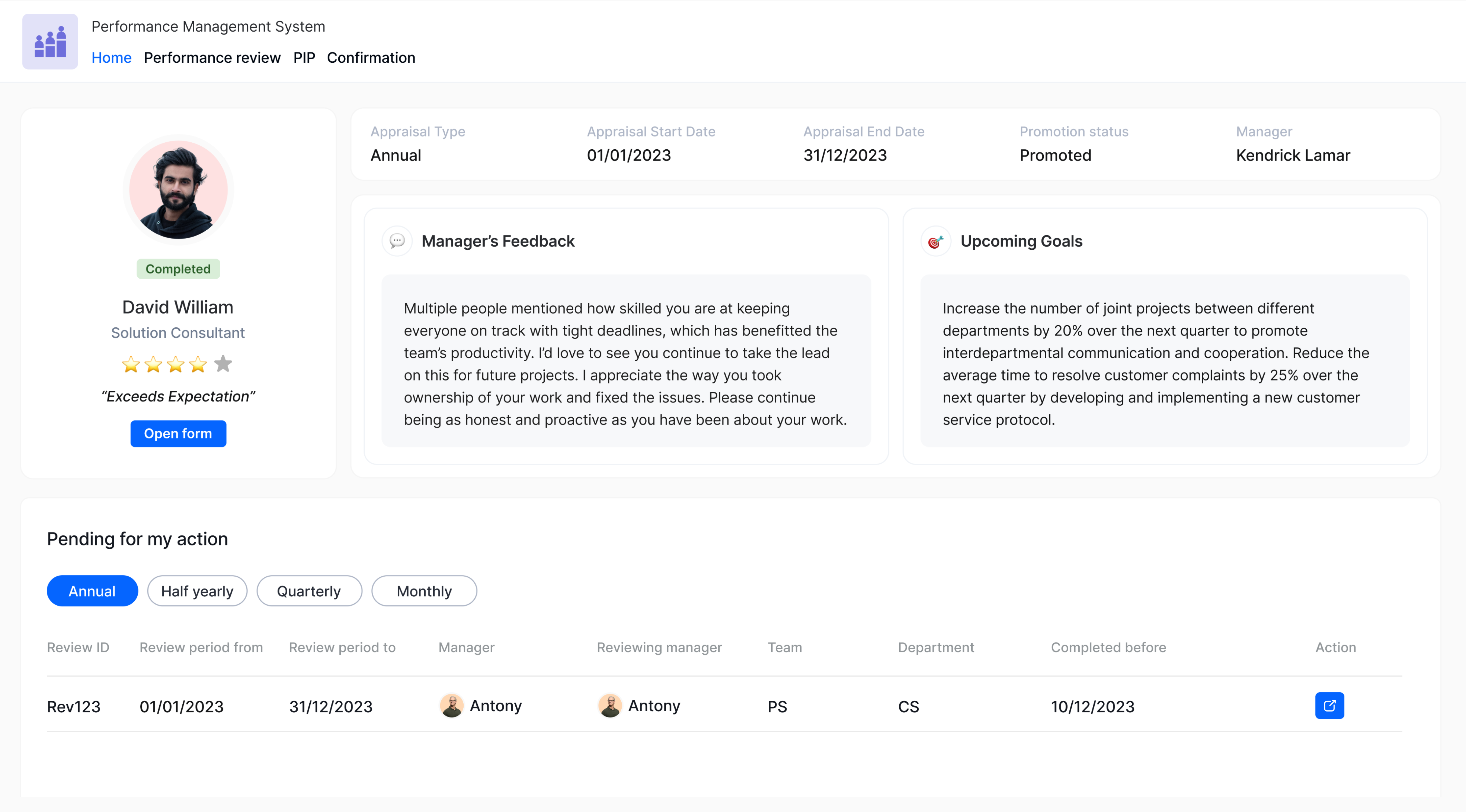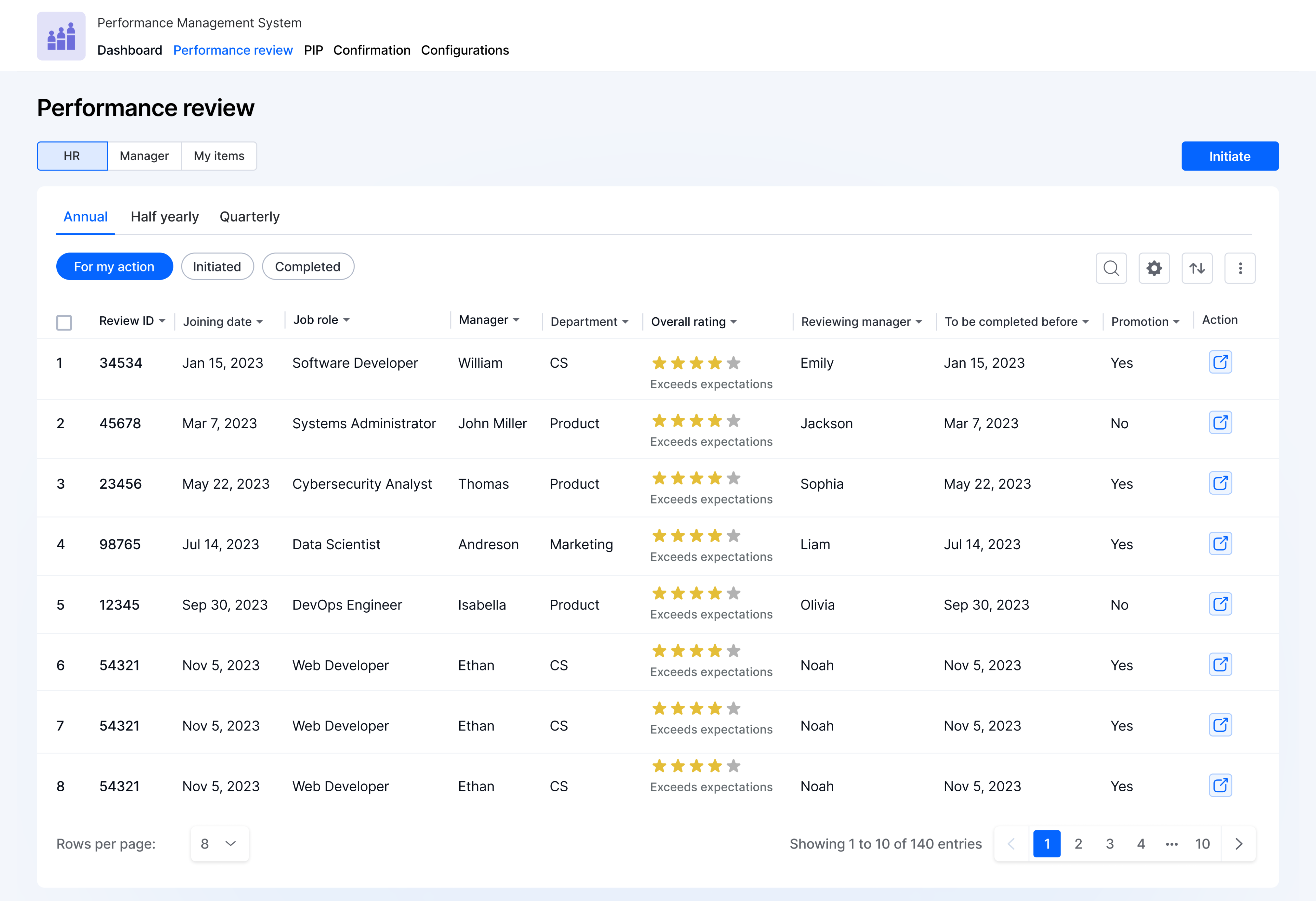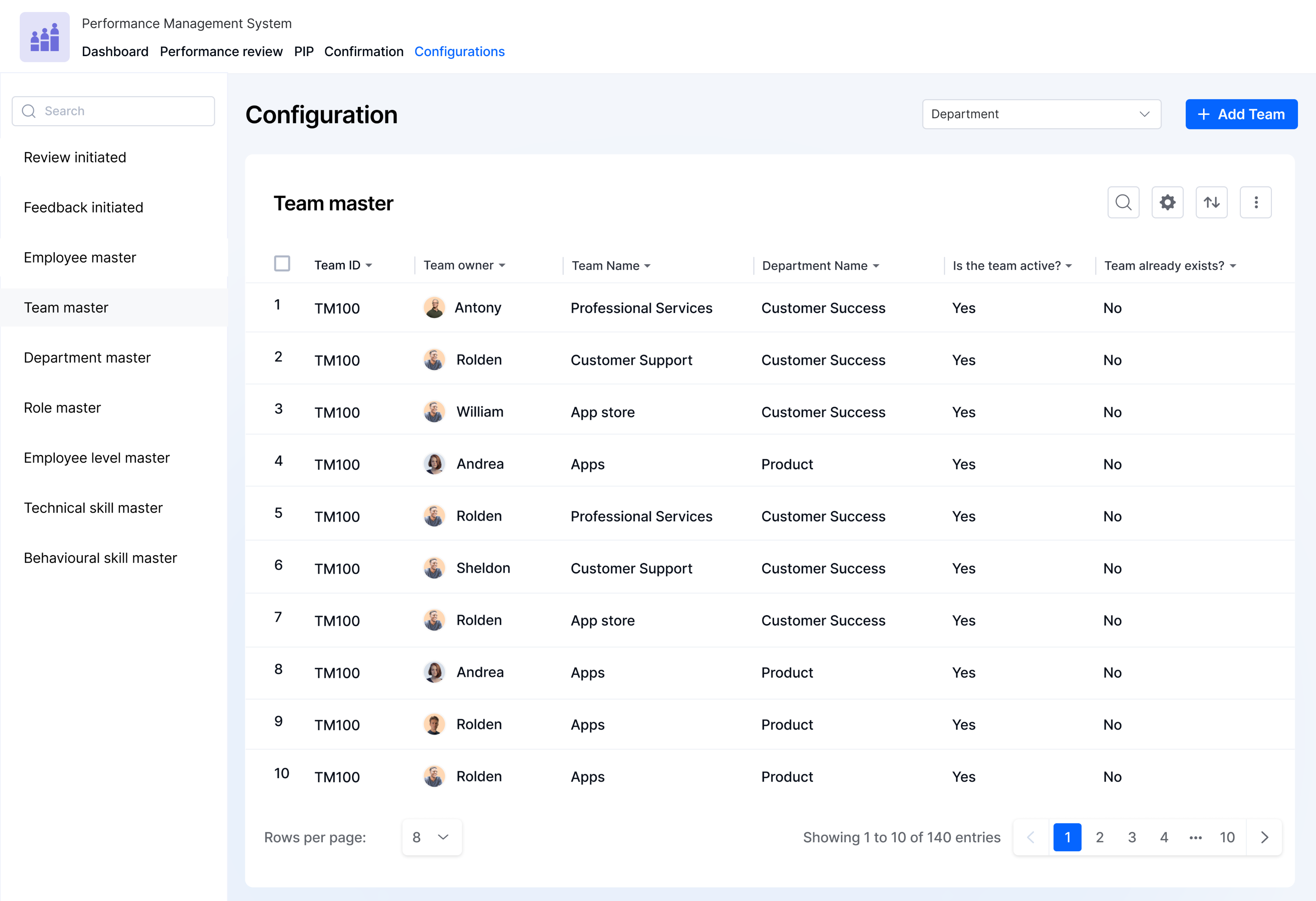Build Faster With
Kissflow's Pre-Built Low-Code Apps
Building low-code apps with Kissflow is easy and requires minimal training. The visual app-building approach empowers anyone to create simple and complex apps without needing developers. Install fully functional pre-built low-code apps to instantly automate and digitize your internal operations, streamlining your work without starting from scratch.

Performance Management System
Track employee performance, set goals, and automate feedback cycles with a comprehensive app
Creator
Language
English
Category
HR
Trusted by enterprises enhancing employee performance management



It is crucial to align skill sets with performance goals to optimize productivity. Kissflow’s Performance Management System (PMS) app facilitates this by mapping role-based skills and enabling talent managers to conduct annual, half-yearly, quarterly, or monthly feedback/appraisal processes. With self-rating, reporting manager rating and reviewing manager rating features, the app streamlines approval workflows and offers comprehensive performance metrics via the dashboard, ensuring clarity in objectives and efficient employee feedback processes.
- Performance reviews
-
-
Conduct performance reviews and feedback sessions annually, half-yearly, quarterly, and monthly. Generate performance reviews in bulk for all employees, categorized by joining months, quarters, or selectively.
-
Track team-wise performance reviews in the dashboard for HR/talent managers and managers.
-
-
Mapping technical skills/competencies
-
Map technical skills and competencies based on roles and behavioral skills and competencies based on employee’s level/grade.
-
Automatically fetch technical and behavioral skills in the Annual performance review based on employee's role and level/grade.
-
Employee confirmation
-
Manage employee confirmation processes, including feedback mechanisms. Track team-wise employee confirmations in the dashboard for HR/talent managers and managers.
-
Performance improvement
-
Implement performance improvement processes with actionable tasks. Track team-wise PIP in the dashboard for HR/talent managers and managers.
-
Organization performance dashboard
-
Create organization-wide employee performance summaries and dashboards for HR/Talent Heads.
-
Employee profile
-
Maintain employee profiles with quantitative data (e.g., ratings, promotion status) and qualitative data (e.g., manager feedback, upcoming goals).
-
AI-suggested feedback
-
Incorporate features to assist managers in delivering effective feedback. (*AI feature on-demand and consent).
1. Click the Enquire button found on the app tile or the app landing page.
2. An enquiry form appears. Next, fill in the details of the features you want and your team’s size in the enquiry form.
3. Click Submit.
Kissflow’s support team will contact you to know more about your requirements.
Streamlining recruitment: Customer stories in action
Explore how businesses manage hiring processes more effectively with Kissflow

This is so easy, even my mom could do this. It was extremely intuitive and straightforward. The watermark was, 'I don't need to call IT to do this. I can do it myself.
Renee Villarreal
Senior IT Manager
Industry
Energy
HeadQuaters
USA
Key Highlights
450+
Process
10x
ROI
10,000+
Users


The beauty of Kissflow is how quick and easy it is to create the apps I need. It's so user-friendly that I made exactly what I needed in 30 minutes.
Oliver Umehara
IT Manager
Industry
Telecom & Media
HeadQuaters
Japan
Key Highlights
28+
Processes
42
Group Companies
70+
Users


We seek to go beyond incremental efforts not only in sustainability but also in everything we do. With Kissflow, FPH and its subsidiaries were able to digitize dramatically major operations, especially in their finance and accounts operations.
Joseph Arnel Chavez
Assistant Manager
Industry
Energy & Utilities
HeadQuaters
Philippines
Key Highlights
100+
Office Processes Automated
1,000+
Monthly Paperless Processes
10,000+
Employees
Frequently Asked Questions
Explore other related apps
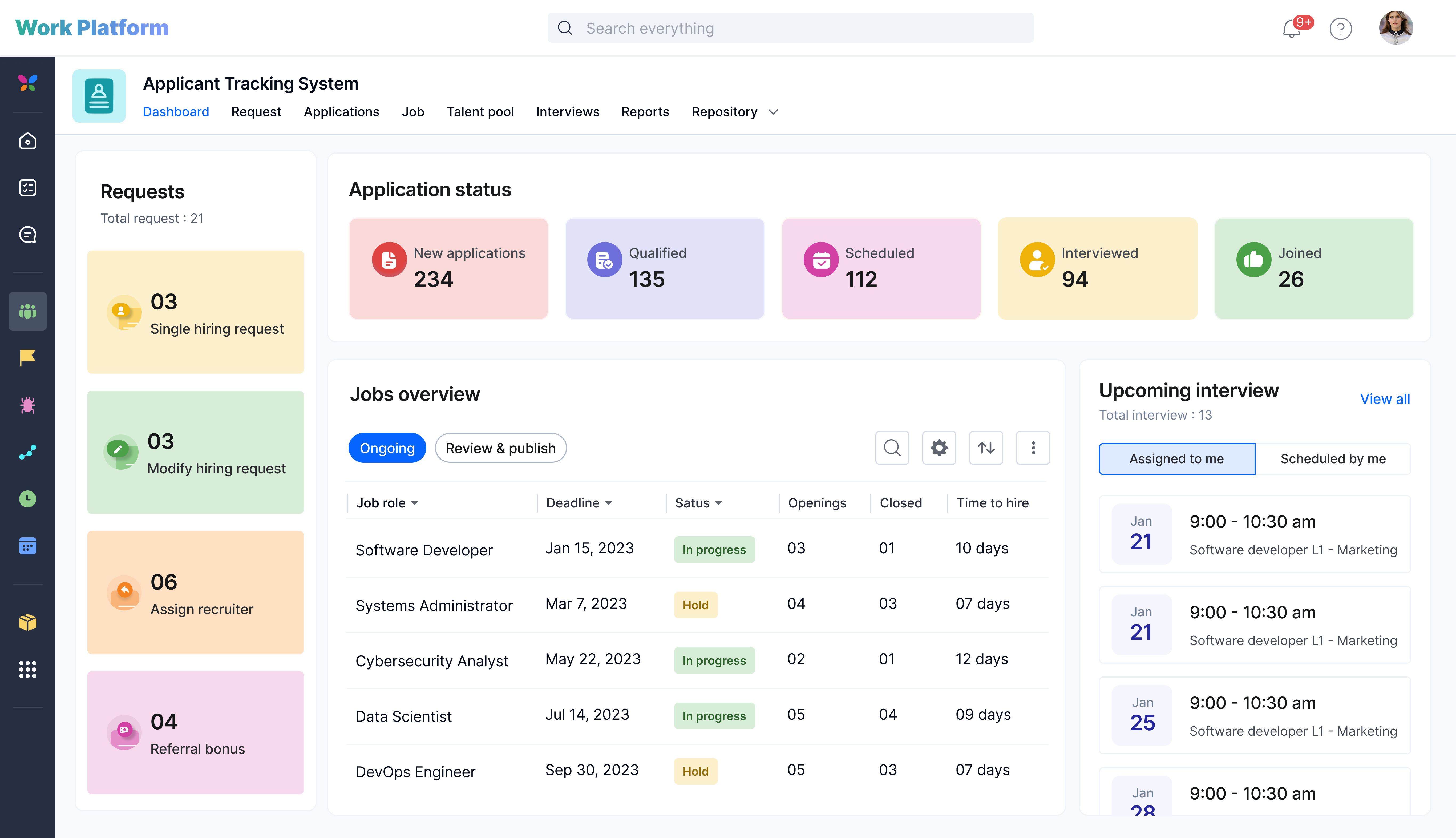
Applicant Tracking System
By Kissflow
Streamline candidate applications and hire the right people with this app.
Paid
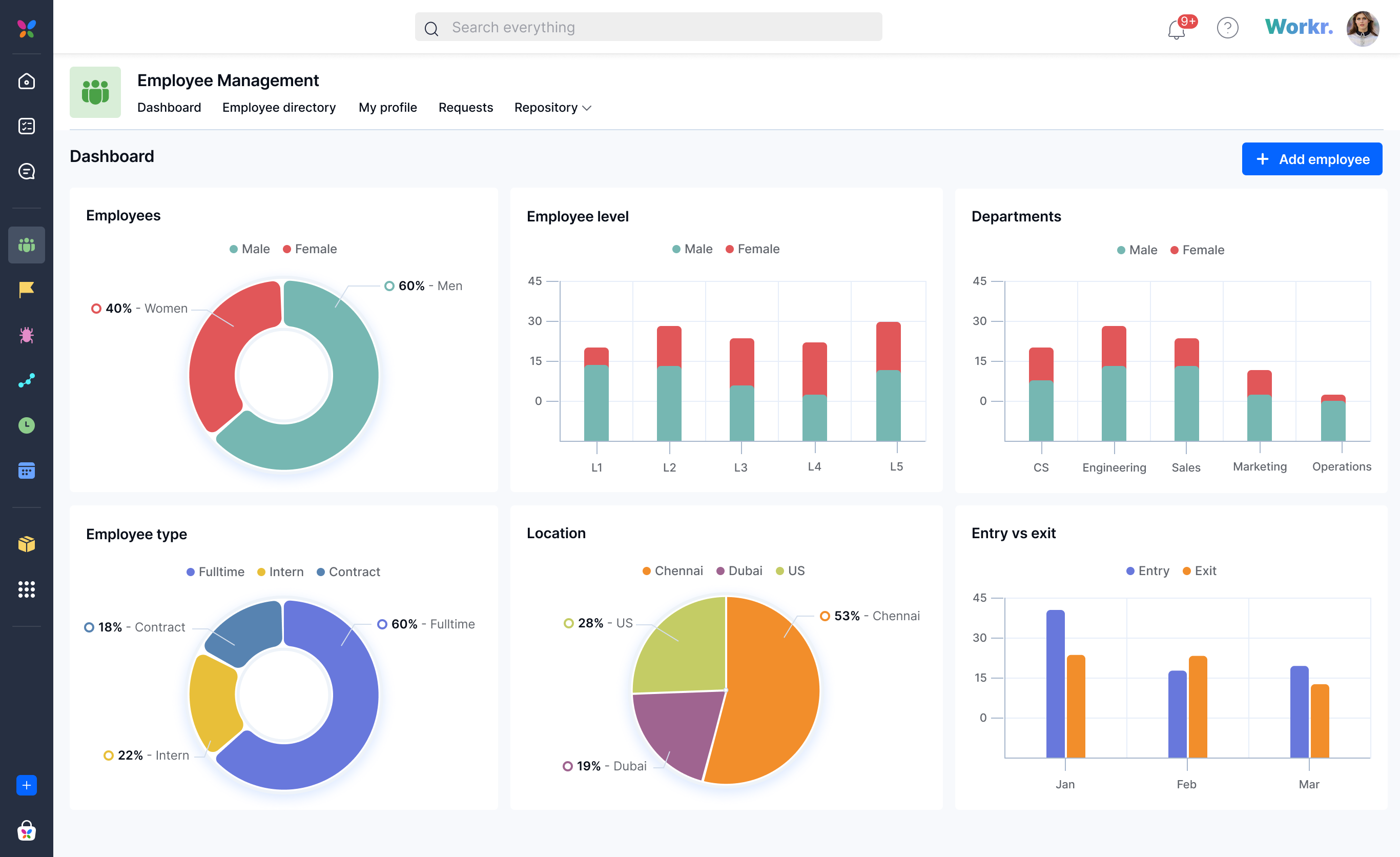
Employee Management
By Kissflow
Streamline and automate HR operations from employee onboarding to offboarding.
Free
Accelerate and scale app development with Kissflow
Customize with pre-built templates
Build custom low-code apps quickly with pre-built templates.
Tackle internal app backlogs
Implement strategies to clear your internal application backlog quickly.
Join enterprises that trust Kissflow
Enterprises use our low-code platform to streamline app development.
Didn’t find what you're looking for?
Let us know what we can build for you
